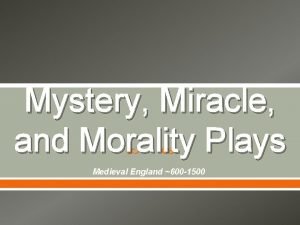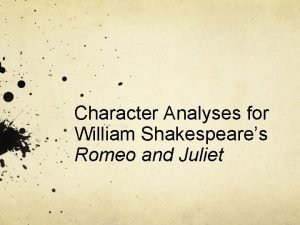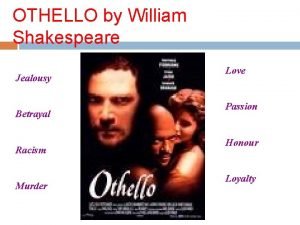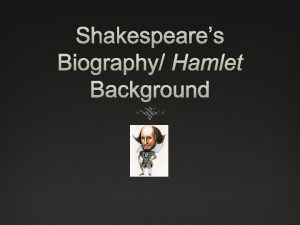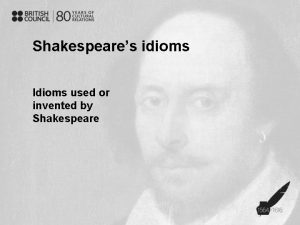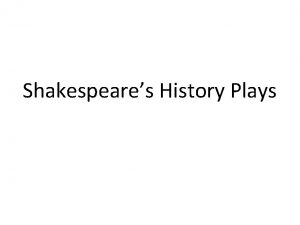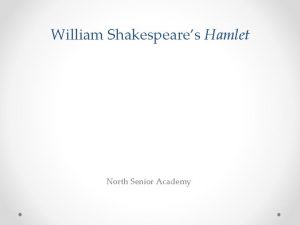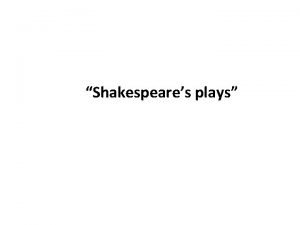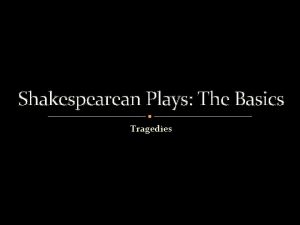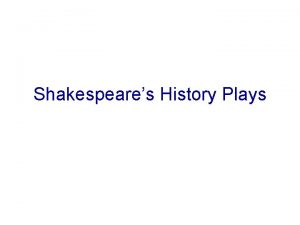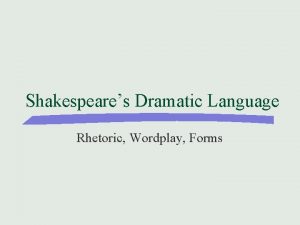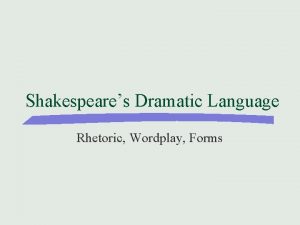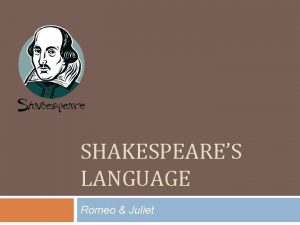The Language of William Shakespeares Plays What do











- Slides: 11

The Language of William Shakespeare’s Plays

What do these actors and actresses have in common? They’ve all starred in movies based on a Shakespeare play. Kenneth Branagh Julia Stiles Laurence Fishburne Heath Ledger Claire Danes Josh Hartnett Toshiro Mifune Michelle Pfeiffer Denzel Washington Mel Gibson Calista Flockhart Alicia Silverstone

What Makes Shakespeare’s Plays Great? Shakespeare’s plays have been popular worldwide for four hundred years because they • appeal to powerful and universal human emotions • contain striking images, memorable expressions, and compelling passages

The Language of Shakespeare’s Plays Shakespeare uses both poetry and prose in his plays. • Elizabethan playwrights generally considered poetry to be elevated language. • Poetry is usually spoken by the main or high-ranking characters. • Elizabethan playwrights generally considered prose to be common language. • Prose is usually spoken by the supporting or low-ranking characters.

Shakespeare’s Use of Poetry The poetry in Shakespeare’s plays consists of both blank verse and rhymed verse. • Shakespeare uses blank verse—unrhymed iambic pentameter—in nearly 70 percent of his dramatic dialogue. • Shakespeare uses rhymed verse in about 10 percent of his dramatic dialogue. • His rhymed verse often consists of couplets—two consecutive lines of poetry that rhyme.

Shakespeare’s Use of Blank Verse • Blank verse sounds similar to human speech but is still considered elevated language. • The rhythm of blank verse emphasizes imagery and heightens the emotional impact of language. Mercutio. True, I talk of dreams; Which are the children of an idle brain, Begot of nothing but vain fantasy; Which is as thin of substance as the air, . . . from The Tragedy of Romeo and Juliet by William Shakespeare

Shakespeare’s Use of Rhymed Verse Rhymed verse is often used to express matters of love and courtship. Romeo. If I profane with my unworthiest hand This holy shrine, the gentle sin is this: My lips, two blushing pilgrims, ready stand To smooth that rough touch with a tender kiss. from The Tragedy of Romeo and Juliet by William Shakespeare

Shakespeare’s Use of Rhymed Verse Couplets may • punctuate a character’s exit • signal the end of a scene Prince. For never was a story of more woe Than this of Juliet and her Romeo. [Exuent omnes. ] from The Tragedy of Romeo and Juliet by William Shakespeare

Shakespeare’s Use of Prose Shakespeare uses prose in more than 20 percent of his dramatic dialogue. Prose is often used to express • lighthearted or casual sentiments • friendly exchanges • humor Second Watchman. If we know him to be a thief, shall we not lay hands on him? Dogberry. Truly, by your office you may. . The most peaceable way for you, if you do take a thief, is to let him show himself what he is and steal out of your company. from Much Ado About Nothing by William Shakespeare

What Have You Learned? 1. Shakespeare’s plays are performed regularly all around the world. a. true b. false 2. The majority of poetry in Shakespeare’s plays is written in a. rhymed verse c. blank verse b. rhymed couplets d. none of the above 3. Prose is usually employed by a. main characters c. high-ranking characters b. low-ranking characters d. love-struck characters

The End
